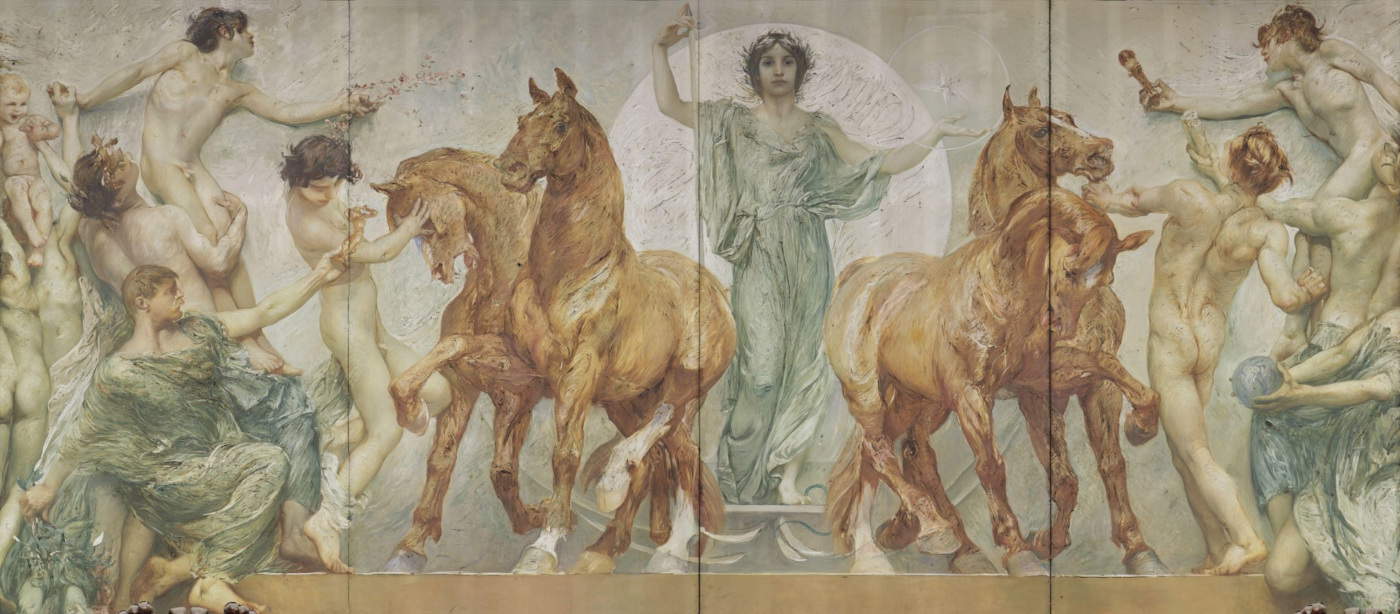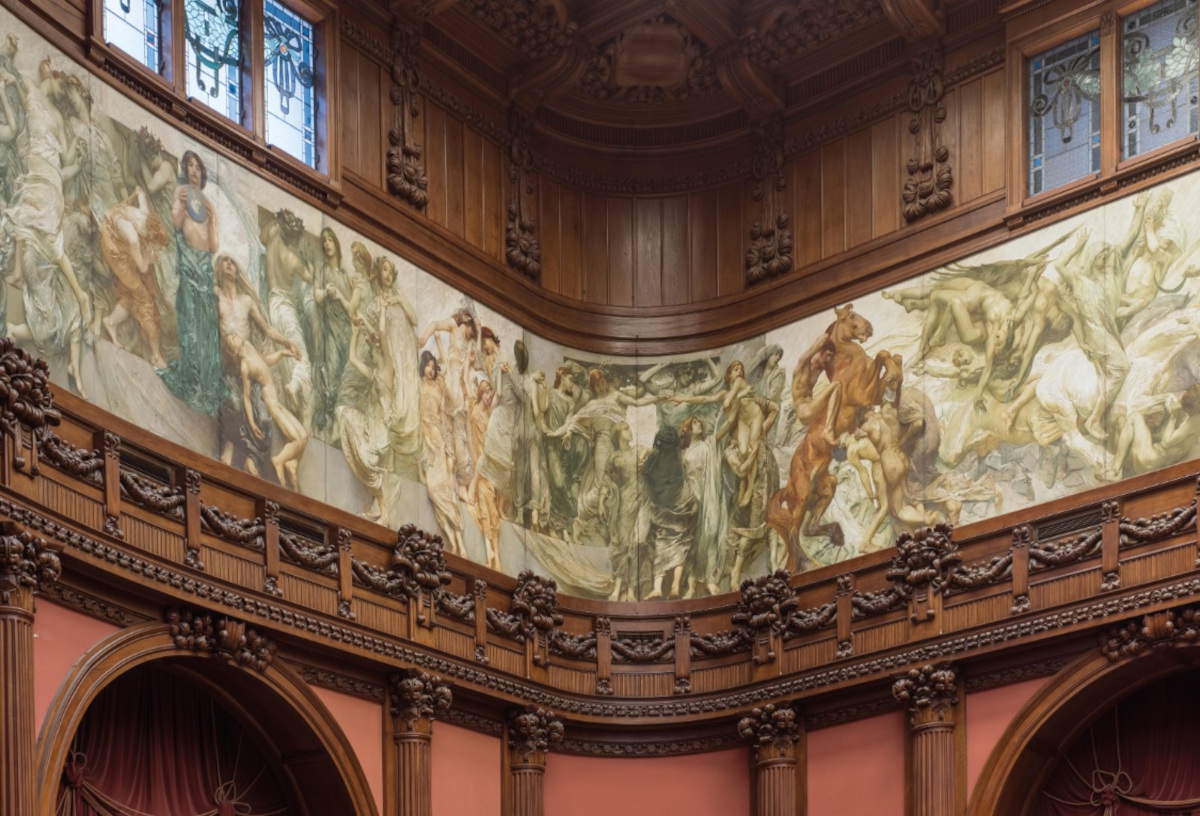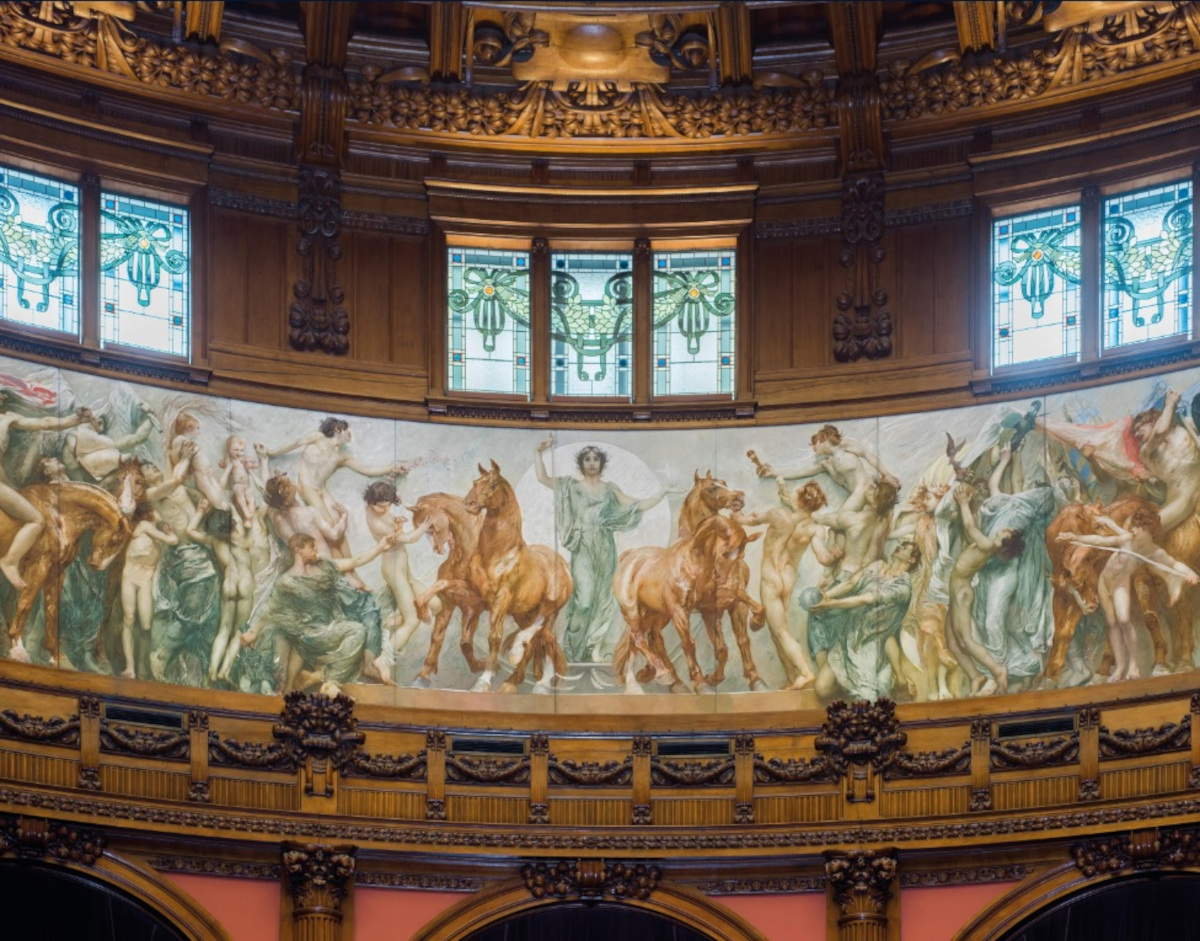Aerial drone footage of Giulio Aristide Sartorio's frieze in the Chamber of Montecitorio realized.
On October 3, 1932, Giulio Aristide Sartorio passed away in Rome. Among his most famous works is the famous frieze of theChamber of Montecitorio. To mark theanniversary of his passing, new aerial drone shots of the frieze were taken to offer a close-up view of it and thus capture details and nuances not visible from the height of the Chamber or from the grandstands, since the work is 19 meters above ground.
The frieze, completed between 1908 and 1912, is a vast pictorial cycle stretching more than 100 meters, consisting of fifty panels nearly four meters high each, which decorate the upper part of theparliamentary chamber. In the work, Sartorio celebrates the history of Italy, from the age of the communes to the Risorgimento, in a symbolic journey that interweaves mythological, allegorical and historical figures, for a total of about 280 characters. It took the artist 930 days to complete this monumental work. The scenes depict vigorous characters, immersed in an atmosphere that reflects both the idealism and tension of the historical period. As Sartorio himself explained, “By decorative art I mean not only the grouping of harmoniously composed figures: but also a gathering of symbols that have a grand epic signification. The Parliament frieze is not only a painting; it must also be a poem.”
Ernesto Basile decided to commission Giulio Aristide Sartorio to decorate the Chamber with a frieze, given the well-established professional relationship between them, having already collaborated in the past. Sartorio thus created, between 1908 and 1912, a 105-meter pictorial frieze, divided into a semicircular and a rectilinear part, which runs above the tribunes along the entire perimeter of the Aula. In the circular part, Italy Triumphant occupies the center of the scene. Her quadriga is led by the Dioscuri, who symbolize the north and south of the peninsula. Next to her, male and female figures offer her the spiritual virtues of the Renaissance. To the right is the representation of art and the celebration of Humanism and the unified language, with the banners of the cities that contributed to the unification of Italy and the spread of Italian. To the left of the quadriga, Sartorio depicts discoveries, classicism and chivalric sense. On either side of the spiritual virtues are the hundred Italian cities, represented by figures holding hands and surrounding popular virtues.
In the rectilinear part of the frieze, Sartorio depicts some salient moments in the history of Italy, highlighting the valor and sacrifice of Italians in the unification process and in the defense of the homeland against foreign invasion. The end result is the image of Italy triumphant in the center of the semicircular part, observing, as Sartorio himself stated, “the dense spectacle of its history.”
To create the work, Sartorio used a technique called cold encaustic, which involved the application of oil paints covered first with turpentine, then with a mixture of wax, turpentine and poppy oil, giving the figures a greater three-dimensionality.





 |
| Aerial drone footage of Giulio Aristide Sartorio's frieze in the Chamber of Montecitorio realized. |
Warning: the translation into English of the original Italian article was created using automatic tools. We undertake to review all articles, but we do not guarantee the total absence of inaccuracies in the translation due to the program. You can find the original by clicking on the ITA button. If you find any mistake,please contact us.





























